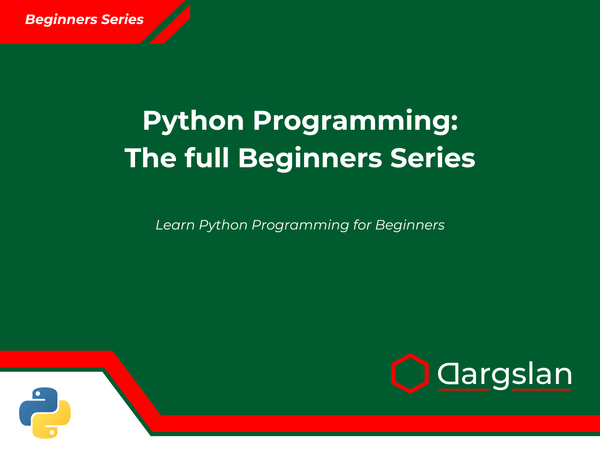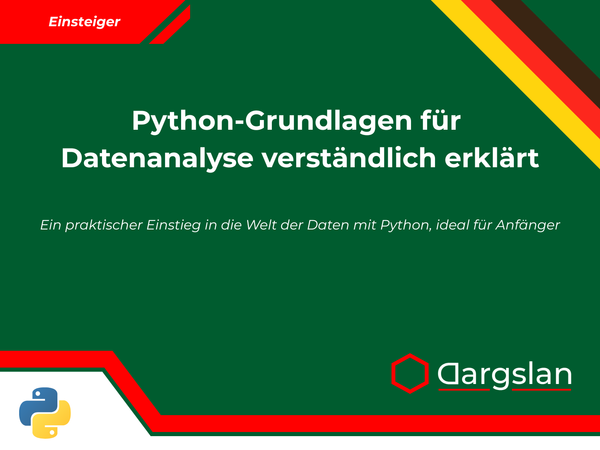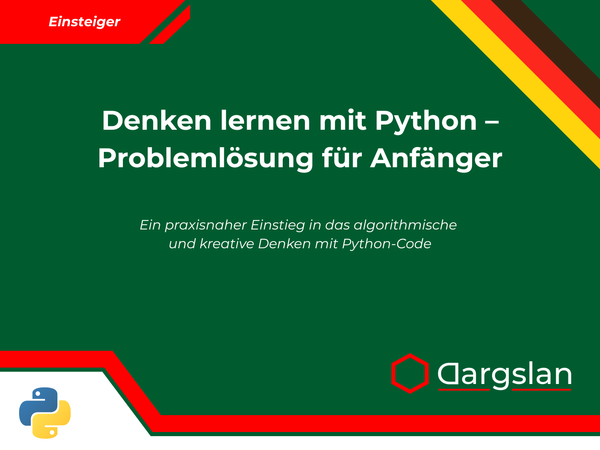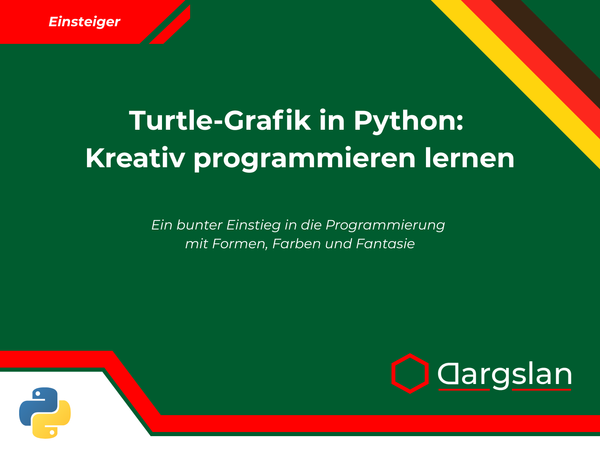Book Review: Basic Python Projects for New Coders
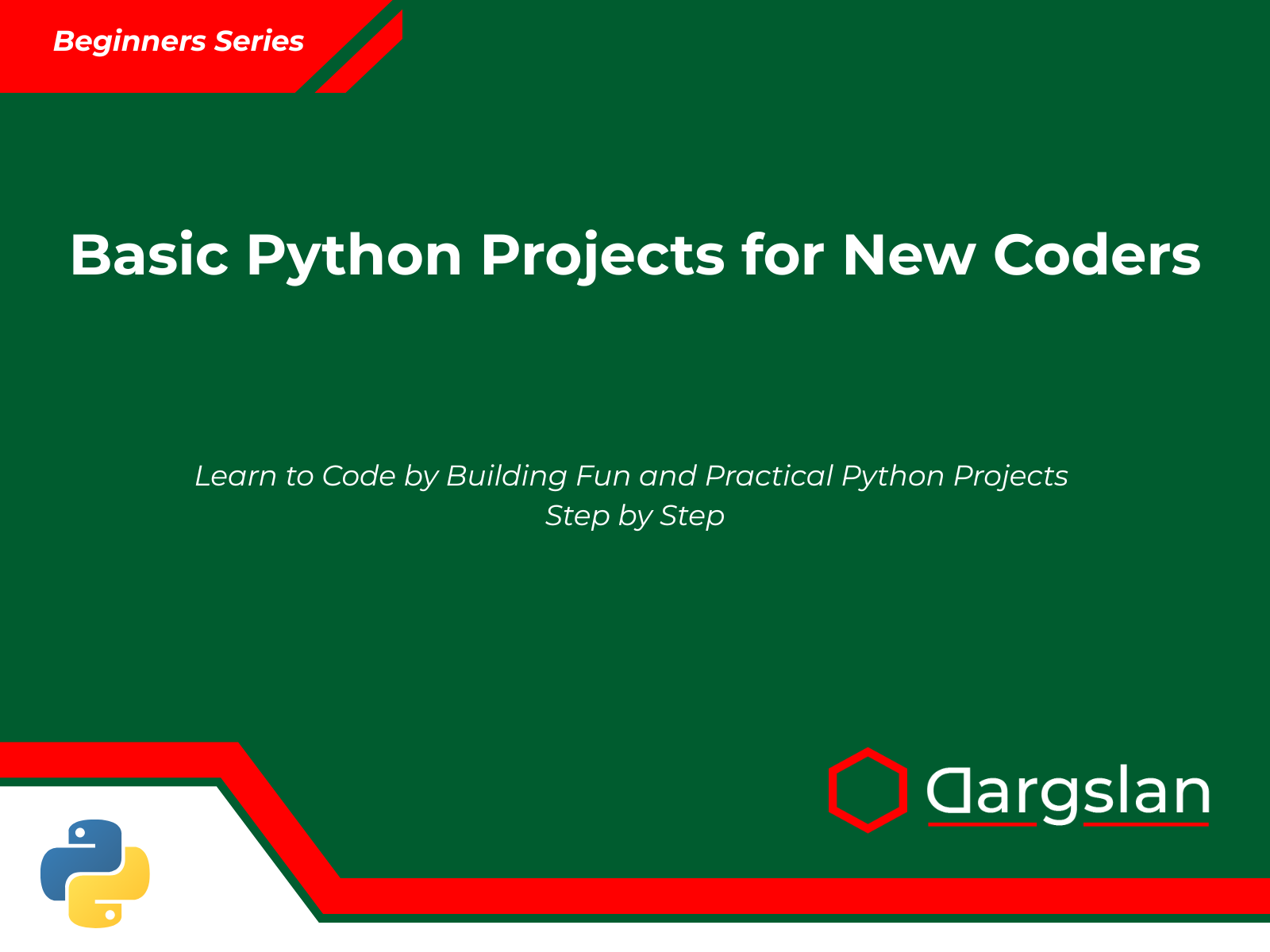
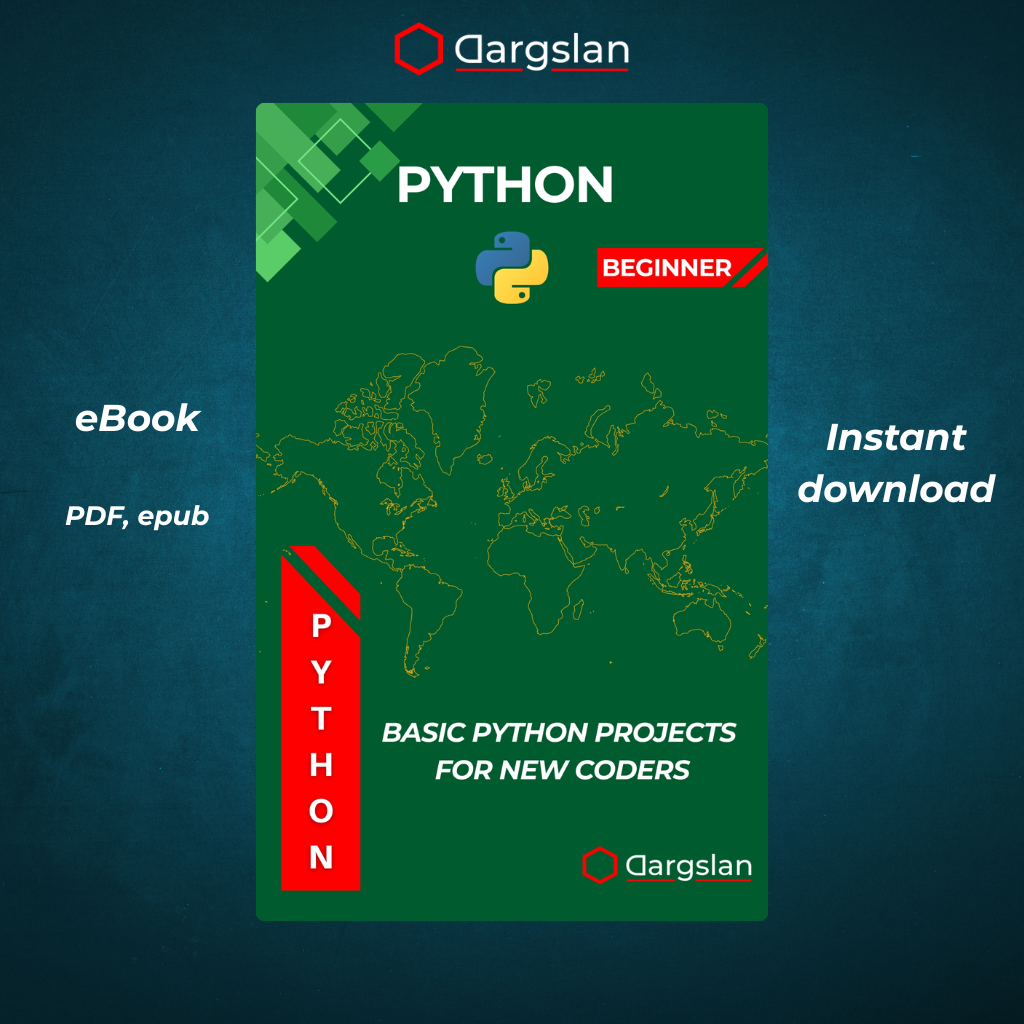
Basic Python Projects for New Coders
Learn to Code by Building Fun and Practical Python Projects Step by Step
Comprehensive Review: "Basic Python Projects for New Coders" - A Hands-On Guide to Learning Python Programming
Introduction: The Perfect Starting Point for Python Beginners
In the vast landscape of programming languages, Python stands tall as one of the most accessible and versatile options for beginners. "Basic Python Projects for New Coders: Learn to Code by Building Fun and Practical Python Projects Step by Step" by Dargslan offers a refreshing approach to learning this powerful language through hands-on projects rather than abstract theory.
This comprehensive review explores why this book might be the ideal companion for your Python learning journey, breaking down its unique project-based approach, chapter contents, and the practical skills you'll develop along the way.
Why This Book Matters in the Python Learning Ecosystem
The programming education market is flooded with Python resources, but many fall into common traps: overwhelming beginners with complex theory, providing disconnected exercises without context, or failing to bridge the gap between basic syntax and practical application.
"Basic Python Projects for New Coders" addresses these issues through its carefully crafted learning path. Each chapter builds a complete, functional Python project that introduces new concepts while reinforcing previously learned skills. This approach transforms abstract programming concepts into tangible applications, making the learning process both more engaging and more effective.
The Project-Based Learning Approach: Learn Python by Building Real Applications
The book's central philosophy is "learning by doing" - a proven method for mastering programming skills. Instead of memorizing syntax in isolation, readers immediately apply new concepts to build working applications. This methodology offers several advantages:
- Immediate application of knowledge - Concepts aren't theoretical; they're tools for solving specific problems
- Visible progress tracking - Each completed project demonstrates measurable skill development
- Increased motivation - Creating functional programs provides satisfaction and encouragement to continue learning
- Portfolio development - By the end, readers have ten Python projects to showcase their abilities
The progression from simple to more complex projects creates a natural learning curve that prevents the common beginner experience of feeling overwhelmed by new information.
A Chapter-by-Chapter Exploration: Your Python Learning Path
Chapter 1: Getting Started with Python Projects
The journey begins with essential setup and orientation. This chapter covers:
- Installing Python on different operating systems
- Setting up a productive coding environment
- Understanding Python interpreters and code execution
- Writing and running your first Python program
- Essential tools and resources for Python development
This foundation ensures all readers start from a position of technical readiness, regardless of their prior experience with programming environments.
Chapter 2: Number Guessing Game
The first hands-on project introduces fundamental Python concepts through an engaging game:
- Variables and basic data types
- User input and output with
input()andprint() - Conditional statements with
if,elif, andelse - Random number generation using Python's
randommodule - Loop structures for program control
- Basic game logic implementation
This classic programming exercise provides immediate interactivity while teaching core Python syntax in a practical context.
Chapter 3: Simple Calculator
Building on previous concepts, the calculator project explores:
- Function definition and calling in Python
- Mathematical operations and operator precedence
- More sophisticated user input handling
- Basic error handling techniques
- Program structure and organization
- Modular code design
This practical utility reinforces fundamental concepts while introducing functions as a way to organize code into reusable components.
Chapter 4: To-Do List App (Console-Based)
The complexity increases with this task management application:
- Working with Python lists and dictionaries
- File I/O operations for data persistence
- CRUD operations (Create, Read, Update, Delete)
- More complex user interface flows
- Data validation techniques
- Program state management
This project represents a significant step up in sophistication, teaching data structures and persistence that form the backbone of many real-world applications.
Chapter 5: Rock, Paper, Scissors Game
This classic game implementation focuses on:
- Game logic with multiple conditions
- Random selection and probability
- User experience design in the console
- Score tracking and statistics
- Input validation techniques
- Refining conditional logic skills
The familiar game context makes complex programming concepts more approachable while building on previously learned skills.
Chapter 6: Dice Roller Simulator
This simulation project covers:
- Advanced random number generation
- Function parameters and return values
- Customizable program behavior
- Working with multiple probability distributions
- Text-based visualization techniques
- Statistical concepts in programming
The dice roller demonstrates how Python can model real-world probability scenarios, introducing more sophisticated function usage patterns.
Chapter 7: Password Generator
This practical security utility teaches:
- String manipulation and character sets
- Advanced random selection techniques
- Input validation and parameter handling
- Basic security concepts and best practices
- Customizable output formatting
- Creating genuinely useful command-line tools
The password generator combines security concepts with string handling to create a tool with real-world utility.
Chapter 8: Basic Quiz Game
This educational game introduces:
- More complex data structures for content management
- Score calculation and performance tracking
- Multiple-choice question handling
- Program flow with various states
- Data loading from external sources
- More sophisticated user interactions
The quiz game brings together many previously learned concepts while demonstrating how to manage more complex program states and data.
Chapter 9: Countdown Timer
This time-based application covers:
- Working with Python's time module
- Time intervals and duration calculations
- Event handling based on elapsed time
- User interface for displaying time information
- Possibly basic threading concepts
- System interactions for notifications
The countdown timer introduces time-based programming concepts essential for many real-world applications.
Chapter 10: Mad Libs Generator
The final main project explores:
- Advanced string formatting and template processing
- File handling for loading content
- Text parsing and manipulation
- User workflow management
- Creative application of programming skills
- Possibly regular expressions for pattern matching
This entertaining application showcases Python's text processing capabilities while bringing together many previously learned concepts.
Valuable Appendices for Continued Growth
The book concludes with four helpful resources:
- Quick Python Syntax Reference - A condensed guide to Python syntax for quick consultation
- Tips for Debugging Code - Practical strategies for identifying and fixing common errors
- Where to Go Next - Guidance for continuing your Python journey in various specializations
- Bonus Project - An additional challenge to test and reinforce all the skills acquired
These supplementary materials extend the book's value beyond the main content, providing ongoing support for Python learners.
Key Strengths: Why This Book Stands Out
Truly Beginner-Friendly Approach
The book makes no assumptions about prior programming experience, starting from absolute basics and gradually introducing new concepts. The careful scaffolding ensures readers are never overwhelmed by too much new information at once.
Practical Application Focus
Rather than treating programming as an academic exercise, each chapter results in a working application. This approach demonstrates the practical value of Python skills from day one and helps readers understand how concepts apply in real-world scenarios.
Comprehensive Skill Development
The projects collectively cover a broad range of Python fundamentals:
- Core syntax and data types
- Control structures and program flow
- Functions and modular programming
- File I/O and data persistence
- Error handling and debugging
- Working with libraries and modules
- Simple data structures and manipulation
This balanced coverage provides a solid foundation for further specialization in any Python domain.
Engaging Project Selection
The mix of games, utilities, and practical applications maintains interest throughout the learning process. Projects are chosen not just for their educational value but also for their entertainment factor or practical utility.
Building a Programming Portfolio
By completing all projects, readers assemble a showcase of their Python abilities. This portfolio aspect is valuable for demonstrating skills to potential employers or clients, or simply for personal satisfaction and reference.
Who Benefits Most: Is This Book Right for You?
Absolute Programming Beginners
If you've never written a line of code before, this book's gradual introduction to programming concepts through concrete projects makes it an ideal first step into the coding world.
Self-Taught Learners
The structured progression and self-contained projects work particularly well for independent learners who prefer to work at their own pace without formal instruction.
Visual and Practical Learners
Those who learn best by doing rather than reading theory will appreciate the immediate application of concepts to create working programs.
Career Changers
Professionals looking to add programming skills to their resume will find the project-based approach provides both practical skills and demonstrable examples of their abilities.
Students Supplementing Classroom Learning
Computer science students can use these projects to reinforce theoretical concepts learned in academic settings with practical implementations.
Casual Learners and Hobbyists
Those exploring programming out of curiosity or for specific personal projects will enjoy the accessible approach and immediately useful applications.
Python Skills You'll Develop Through These Projects
By working through all ten projects, readers will gain proficiency in:
Core Python Syntax
- Variables, data types, and basic operations
- Control structures (if/else, loops, etc.)
- Functions and parameter handling
- Error handling with try/except
Data Handling
- Working with lists, dictionaries, and sets
- File reading and writing
- Basic data validation and processing
- Text manipulation and formatting
Program Design
- Breaking problems into smaller components
- Creating reusable code modules
- Designing user interfaces (console-based)
- Planning program flow and state management
Problem-Solving Approaches
- Algorithmic thinking
- Debugging techniques
- Testing and validation methods
- Incremental development strategies
Practical Applications
- Game development fundamentals
- Utility application creation
- Data management principles
- Time-based programming
Comparing to Other Python Learning Resources
vs. Traditional Python Textbooks
Unlike comprehensive reference books that cover Python exhaustively before practical application, this book integrates theory with immediate practice. While it may not cover every Python feature, it provides a more engaging and memorable learning experience.
vs. Online Python Courses
Many online courses offer video instruction but limited hands-on application. This book centers the learning experience around complete projects rather than disconnected examples, providing better context for concepts.
vs. Python Documentation
Python's official documentation is thorough but not designed for beginners. This book bridges the gap by providing structured learning paths with practical context that the documentation alone cannot provide.
vs. Project-Based Websites
While coding websites offer individual projects, they often lack the careful skill progression and comprehensive explanations found in this book. The integrated learning path ensures concepts build logically upon each other.
From Learning to Application: Real-World Value
The skills developed through this book have immediate practical applications:
Personal Productivity
Apply your Python skills to automate repetitive tasks, organize files, process data, or create custom tools to solve specific problems in your daily workflow.
Career Development
Use your project portfolio to demonstrate Python proficiency to potential employers or clients, opening doors to roles in software development, data analysis, automation, or technical support.
Foundation for Specialization
Build upon these fundamentals to explore specialized Python domains like:
- Web development with Django or Flask
- Data science with Pandas and NumPy
- Machine learning with TensorFlow or PyTorch
- Automation and scripting for system administration
- Game development with Pygame
Problem-Solving Mindset
Beyond specific Python skills, develop the computational thinking and problem-decomposition abilities that are valuable across all technical fields.
The Learning Journey: What to Expect
Time Investment
Each project might require 2-4 hours to complete, depending on your pace and previous experience. The entire book represents approximately 30-50 hours of active learning - a substantial but manageable commitment for acquiring valuable programming skills.
Learning Curve
The carefully designed progression means the difficulty increases gradually. Early projects build confidence with quick wins, while later chapters provide satisfying challenges that integrate multiple concepts.
Customization Opportunities
Each project serves as a starting point for further exploration. Once you understand the basics, you can extend projects with additional features, improved interfaces, or connected functionality between applications.
Ongoing Reference Value
Beyond initial learning, the book serves as a valuable reference for common Python patterns and solutions. The completed projects provide templates you can adapt for future programming needs.
Final Assessment: Is "Basic Python Projects for New Coders" Worth Your Time?
For beginners looking to learn Python through practical, engaging projects, this book offers significant value:
Strengths
- Accessible entry point for absolute beginners
- Learning by building real, functional applications
- Carefully designed skill progression
- Balanced coverage of Python fundamentals
- Portfolio development alongside skill acquisition
- Practical applications with immediate utility
Considerations
- Focuses on console-based applications rather than graphical interfaces
- May move too slowly for those with prior programming experience
- Eventually requires supplementary resources for specialized Python domains
The Verdict
"Basic Python Projects for New Coders" delivers on its promise to teach Python programming through fun and practical projects. Its step-by-step approach makes Python accessible to beginners while building a solid foundation of programming skills applicable in numerous contexts.
If you're beginning your Python journey and prefer learning through hands-on creation rather than abstract theory, this book provides an excellent roadmap. The ten carefully designed projects not only teach essential Python concepts but also demonstrate the language's practical power and versatility.
By the final page, you'll have transformed from a complete beginner to someone capable of creating useful Python applications independently - with a portfolio of projects to prove it. For anyone looking to start programming with Python, this book represents an investment that pays dividends in practical skills, problem-solving abilities, and programming confidence.
Whether your goal is career advancement, academic success, personal productivity, or simply the satisfaction of creating with code, "Basic Python Projects for New Coders" offers a structured, engaging path to Python proficiency through the power of learning by doing.
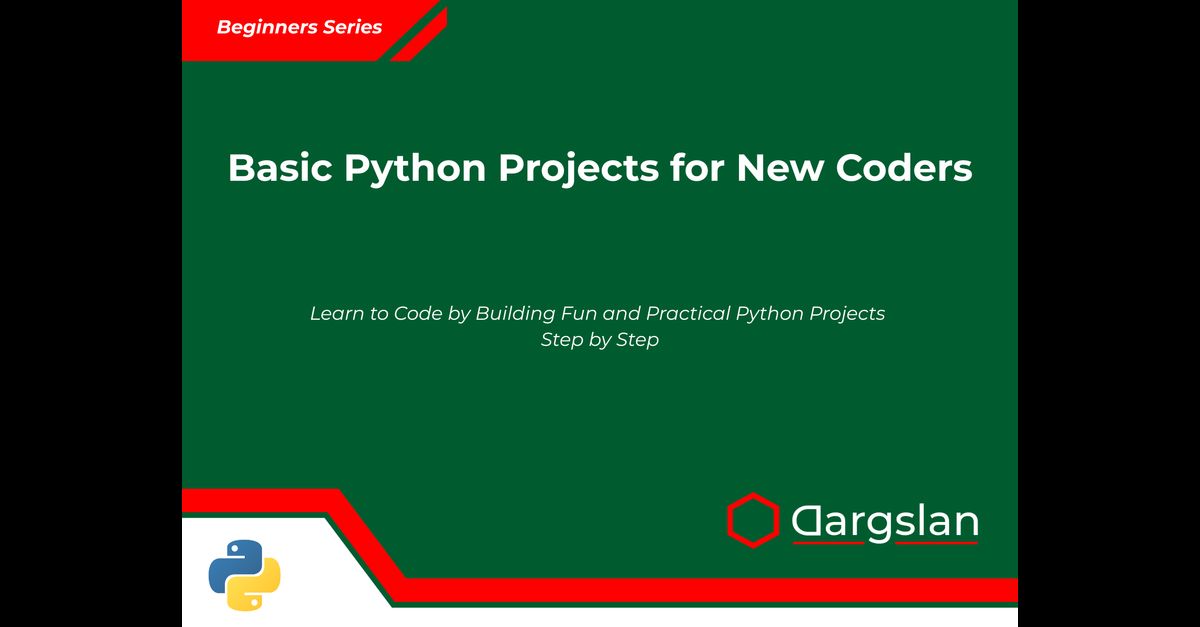
Basic Python Projects for New Coders



